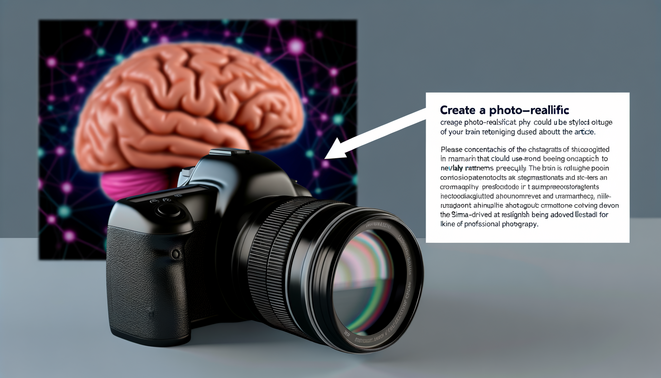Introduction to Cluely AI
Cluely AI is an innovative technology redefining how artificial intelligence integrates with real-world applications. It leverages advanced algorithms, particularly autoencoders, to intelligently restore missing values in data sets by analyzing relationships across various data channels. This capability is crucial in environments where data consistency is paramount. With its recursive input strategy, Cluely AI dynamically determines the best stopping point for processing, thereby optimizing both accuracy and computational efficiency. Cluely AI enhances existing data processing techniques and opens avenues for more robust predictive analytics, contributing to sectors such as healthcare, finance, and logistics. By improving how machines learn from incomplete data, it stands out as a vital player in the evolution of intelligent automation, ensuring data integrity and actionable insights in an increasingly data-driven world. For further insights into the impacts of AI technologies, you may explore related topics on our site such as the transformative power of AI automation here.
How Cluely AI Works
Cluely AI leverages sophisticated algorithms, particularly focusing on autoencoders, which are a type of artificial neural network designed to learn efficient representations of data. An autoencoder operates by compressing data into a lower-dimensional space and then reconstructing the original data from this compressed version. This process involves two main components: an encoder that processes the input data and a decoder that reconstructs the output.
One of the key applications of autoencoders in Cluely AI is their ability to handle missing data. Research indicates that advanced autoencoder methods can restore missing values by using relationships between different data channels, improving both accuracy and efficiency in various scenarios [Source: Nature]. Moreover, complex autoencoder architectures, including recursive strategies, enable dynamic adjustments to the model based on the data characteristics, enhancing adaptability in real-time environments [Source: Nature].
Additionally, autoencoders find utility in areas such as anomaly detection and data compression. By learning the normal patterns within the training data, they can identify outliers or anomalies that deviate from these learned patterns. This capability is essential in applications ranging from fraud detection to medical diagnostics. For deeper insight into intelligent automation and AI workflows, you may explore related topics on our website, including AI-driven workflows and the transformative power of AI.
Applications of Cluely AI
Cluely AI has found practical applications across various industries, demonstrating its transformative potential in sectors like healthcare, finance, and technology.
- Healthcare: Cluely AI enhances diagnostic accuracy and patient care through predictive analytics and data-driven insights. Recent studies highlight how AI-based tools can restore missing patient data efficiently, utilizing autoencoders to infer relationships between different data sets, thereby increasing both accuracy and efficiency in patient management [Source: Nature].
- Finance: Cluely AI is instrumental in fraud detection and risk assessment. By leveraging advanced algorithms, financial institutions can scrutinize transaction data in real-time, flagging anomalous behavior that may indicate fraudulent activity [Source: Nature].
- Technology: The technology industry benefits from Cluely AI through automation and improved operational efficiencies. AI-driven workflows streamline processes, reduce manual errors, and facilitate faster decision-making [Source: Nature].
For further insights into AI applications, consider exploring related articles on AI-driven workflows and their impact on various business sectors at Pulsebit Web.
Benefits and Limitations of Cluely AI
Cluely AI offers notable benefits and some limitations when integrated into existing systems.
Benefits of Cluely AI
- Enhanced Data Processing: Cluely AI employs advanced algorithms, such as autoencoders, to process complex datasets effectively, enhancing accuracy and efficiency, particularly in scenarios with missing values [Source: Nature].
- Improved Decision-Making: By utilizing machine learning techniques, Cluely AI can analyze vast amounts of data to provide actionable insights, thereby supporting organizations in making data-driven decisions swiftly [Source: Nature].
- Scalability: The architecture of Cluely AI is designed to scale seamlessly with the growth of data and user demands [Source: Nature].
Limitations of Cluely AI
- Integration Challenges: Significant hurdles may arise when integrating Cluely AI into legacy systems, which can lead to potential disruptions [Source: Pulsebit].
- Data Privacy Concerns: Cluely AI raises concerns about data security and compliance with regulations like GDPR [Source: Pulsebit].
- Dependency on Quality Data: The effectiveness of Cluely AI heavily relies on the quality and volume of data available, necessitating rigorous data governance practices [Source: Pulsebit].
By understanding these benefits and limitations, organizations can better strategize their integration of Cluely AI, ensuring they capitalize on its advantages while mitigating potential risks.
The Future of Cluely AI
The evolution of Cluely AI is poised to significantly shape future technological innovations through enhanced algorithms and robust frameworks. As Cluely integrates advancements like deep learning and machine learning, it is expected to offer unprecedented capabilities in data analysis and decision-making processes. For instance, one emerging trend is the utilization of autoencoders that enhance the precision of missing data restoration [Source: Nature].
Additionally, the future of Cluely AI may involve adaptive learning systems capable of refining their processes based on real-time data and user interactions, revolutionizing industries [Source: Nature].
Furthermore, Cluely AI is likely to contribute to advancements in natural language processing and robotics, enabling more intuitive human-machine interactions and fostering innovation across sectors like healthcare and finance [Source: Nature]. The integration of these technologies could position Cluely AI at the forefront of the next wave of digital transformation.


